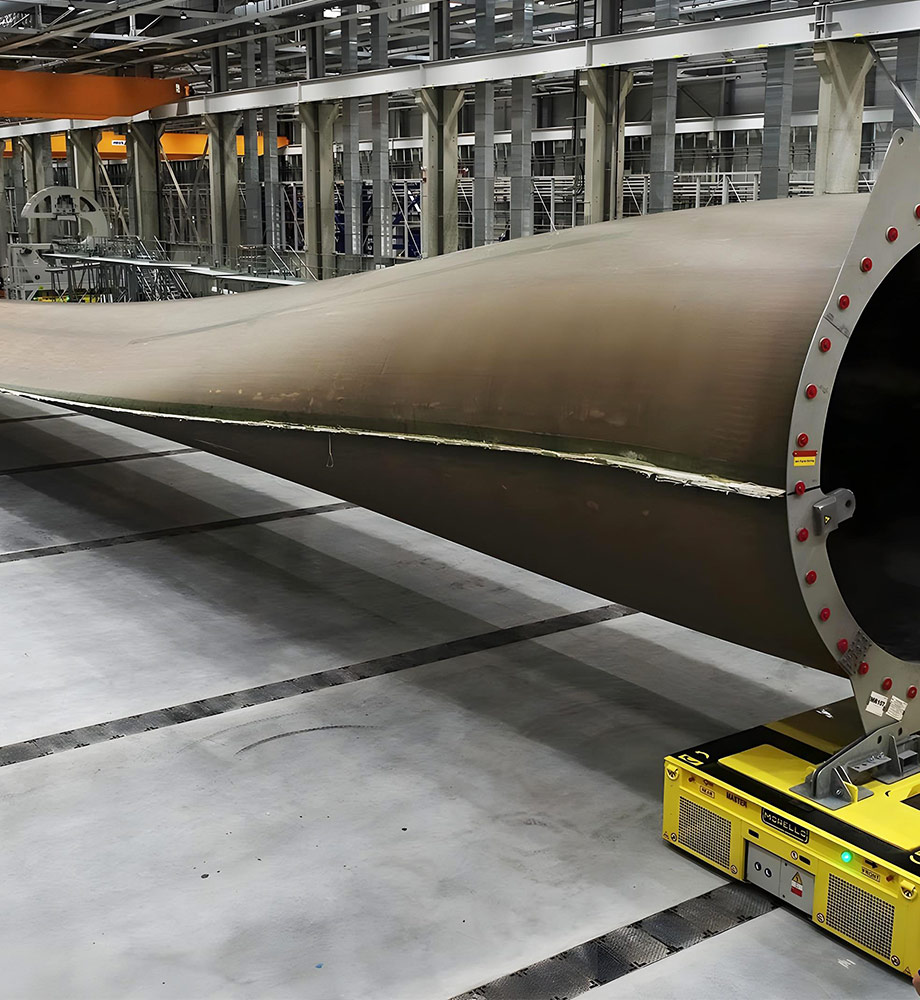Key Features
- High-Strength Carbon: Carbon fiber pultruded spar caps achieve very high stiffness and strength per weight.
- Continuous Length: Pultrusion produces spar caps up to hundreds of meters, so blades can have one-piece caps for maximum efficiency.
- Precise Fiber Orientation: Unidirectional carbon fibers aligned along the length give exceptional linear properties.
- Multiple Variants: Available as infused, prepreg, or pultruded variants to suit manufacturing method.
Benefits
- Longer Blades: Carbon spar caps enable blade lengths beyond the limits of fiberglass, boosting energy capture.
- Weight Reduction: Lighter than equivalent glass laminates; reduces gravity loads on turbine.
- Improved Reliability: Stiffer blades have less dynamic bending, reducing fatigue damage over time.
- Manufacturing Consistency: Pultruded caps ensure uniform thickness and fiber content, improving quality control.
Applications
- Primary spar flanges in utility-scale wind turbine blades.
- Retrofit reinforcement for existing blades (e.g. bonding external spar straps).
- Prototype or small-batch blades where custom carbon profiles are needed.
Technical Specifications
- Material: Typically carbon fiber with epoxy resin. (Basalt or S-glass options for budget-conscious designs.)
- Dimensions: Common thickness 5–30 mm, width 50–200 mm, length per blade.
- Mechanical: Modulus up to ~150–200 GPa; tensile strength ~1200–1500 MPa.
- Fire Safety: Can be formulated with fire-retardant resins per turbine spec.
Unique Selling Points (USPs)
- Continuous Fiber Advantage: Pultruded caps have fibers along entire length, giving unmatched stiffness.
- High Efficiency: Carbon’s low density allows highest strength-to-weight, directly translating to longer blades and more power.
- Cost-Effective at Scale: Once tooling is set, pultrusion is very efficient for large-volume spar cap production.

